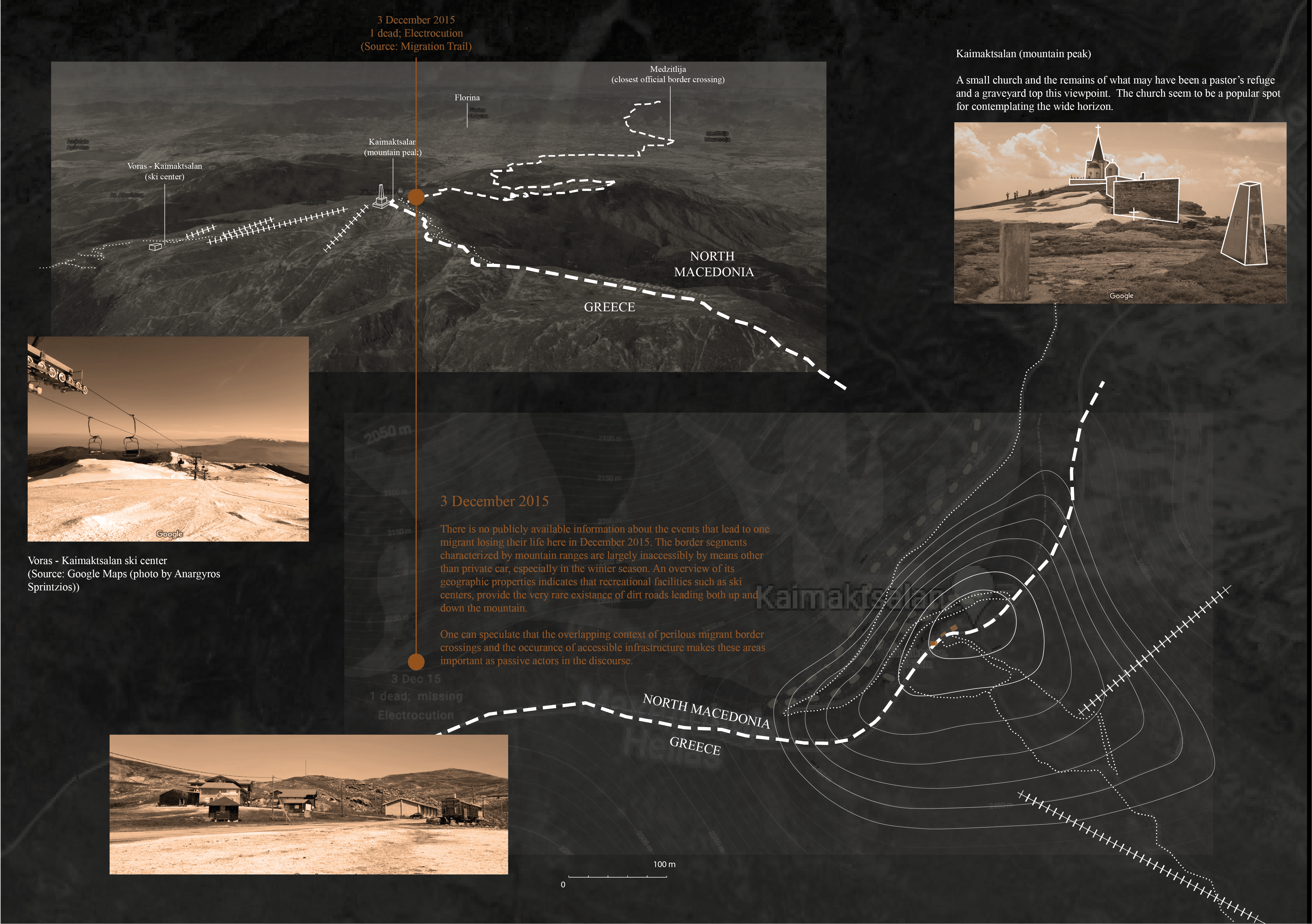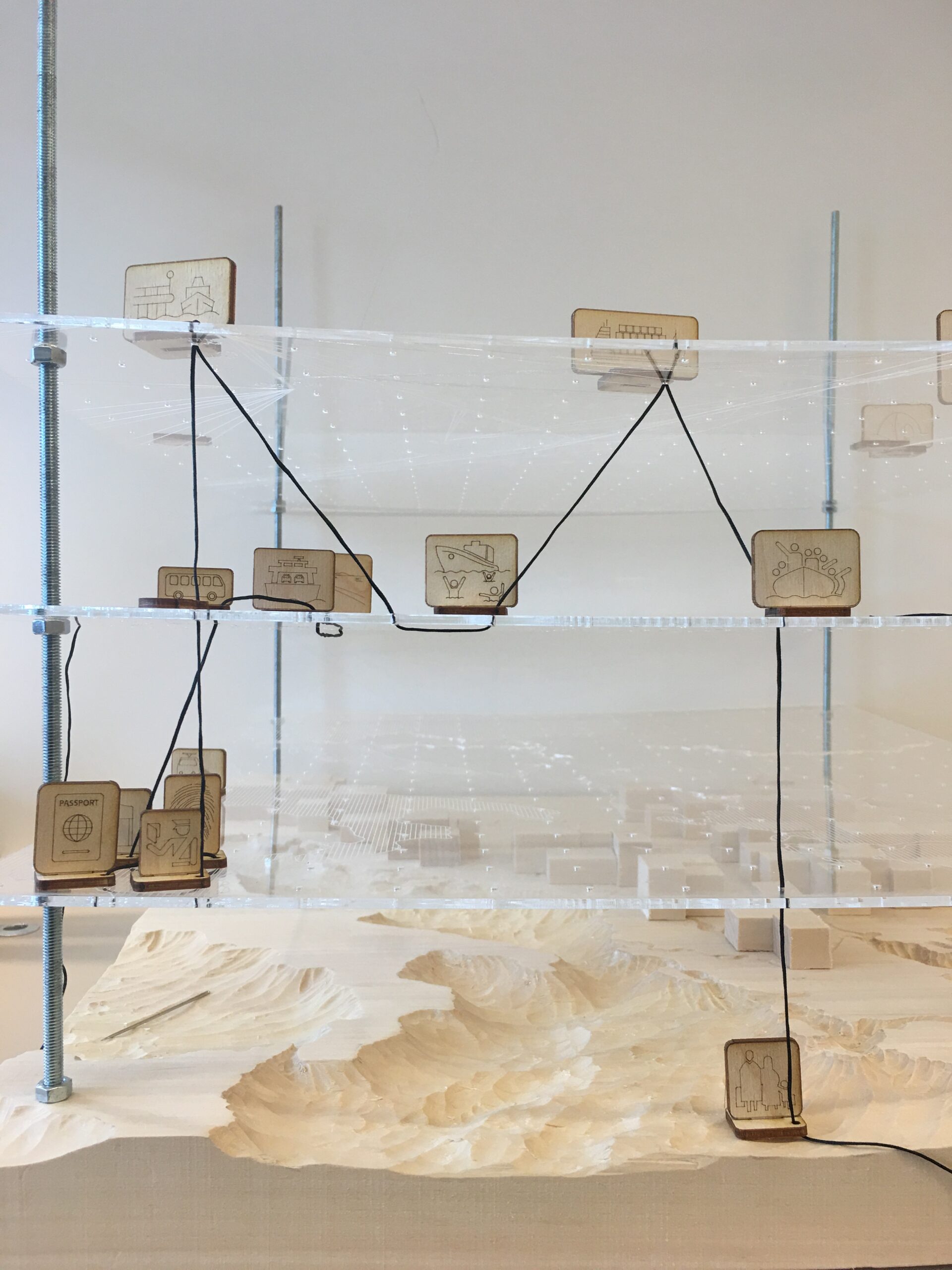Page VI – ANALYSIS
Page VI – ANALYSIS: Geographies of borders and migration
Topological assemblies
Topological mapping or assembly is a method I tried out as a way to make connections between specific events in the space-time of a migrant journey, with the instruments that made that event possible.
For example, below is a topological assembly of networks of human smugglers in relation to one part of a migrant’s journey. On the first sketch (to the left) the spatial aspects of the journey – the situations – are mapped out (the home, various transportation modes, villages, a border barrier, the Mediterranean and refugee camps). On the first overlay (in the middle) I have placed out items – facilitators – without which the each step of the journey had not been able to fulfil (initial funding, passports, GPS and mobile phones, registration documents etc.). In the final step, these non-human instruments – providers – are connected to human actors in the smuggler’s network (the bus driver, the person who owns the safe house, the corrupt border police or the commercial ship that agreed to participate in human smuggling).
By mapping the various processes of migration and borders in this way, helps to visualize and understand the intricate networks that this discourse it wrapped in.
Relational analysis of migration mediation
Combining research on Europe’s border conditions (zoomed in on the EMR – Eastern Mediterranean Route) with instruments of migration infrastructure and the migrant journeys/stories told in Migration Trail.
The concept of the physical model is the same as the above explained topological mappings – each layer represents one dimension of the discourse, and though instruments appear on different layers (they operate in different dimensions) they still create relations with instruments on other layers.
Overlaps and separation of border functions
In the future master thesis I will continue to investigate the concept of the border as space for either convergence or divergence of multiple narratives and experiences. The research so far indicates that at some parts of the border the migrant experience of the border is both physically and psychologically separated from that of civilians, tourists of figures of authority. Humanitarian and civilian border crossings are physically and actively separated, sometimes by kilometres, as in the case of the border crossing of Eidomeni-Gevgelija. In other places the two experiences of the border as barrier vs. facilitator – though otherwise fundamentally different – co-exist on the same territory. Such is the case at the border close Kaimaktsalan ski station.
”An overview of the EMR geography reveals that refugee infrastructure is mostly adjacent to
Philippou (2020)
the periphery’s border settlements. The precise routes and stops of the passages make visible the consistent separation of EMR spaces from the local communities. When migrants and refugees travel by rail, it is on exclusively assigned trains, often late at night, as in the case of Austria. When it is by bus, the driver follows tertiary streets and unpaved roads to access the remote border passage assigned to migrants and refugees. A characteristic example is that of the Greek-North Macedonian border. While the civilian border crossing is along the highway and accompanied by commercial activities, the border passage for the displaced is in the middle of a field a few kilometres away.”
The case of Eidomeni-Gevgelija border crossing on the Macedonian border with Greece: interesting here is the distinct separation of the migrant vs. civilian experience of the border.

At the Greek ski station Voras at Mt. Kaimaktsalan, recreational experiences on the border overlap with perilous migrant journeys across it. In response to increasingly solid and impenetrable borders in accessible parts of the region, migrants can be forced to cross the border ever remotely in order to do so unnoticed. Here, a migrant lost their life in 2015. The reason for this accident in this specific location might be traced back to the existence of the ski center, and the fact that this might make remote roads possible to traverse even in winter months.





